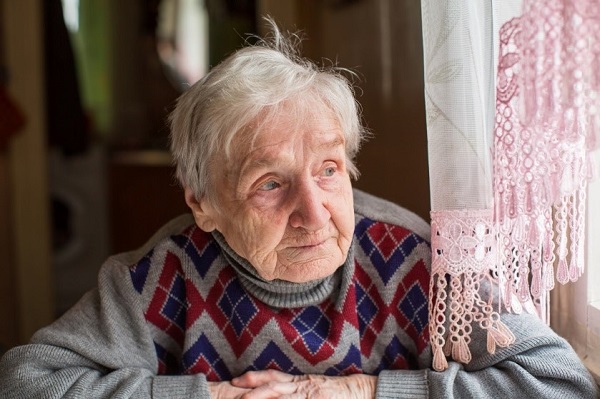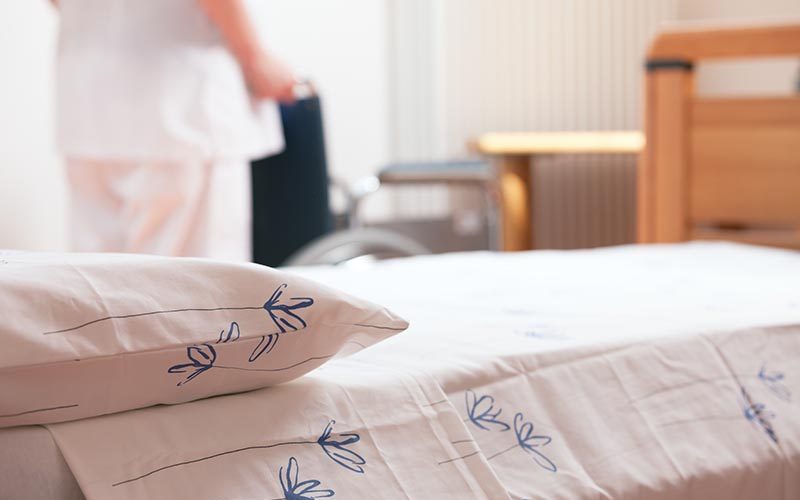Elder abuse is a widespread issue in our society today. While all the different forms of elder abuse are saddening, nursing home abuse is worse because it comes from an unexpected source— health care professionals. Yet the issue is as prevalent as all the other forms.
According to a healthcare research study, 64% of nursing home staff have confessed to committing abuse since 2021. In 2014, more than 14,000 elders reported some form of nursing home abuse.
This number comprises different types of nursing home abuse, including psychological, physical, financial, and sexual abuse or gross neglect.
Even though psychological abuse is the most prevalent, it may be difficult to pinpoint an elder suffering from it. On the other hand, physical abuse and neglect are easy to pick up on. One of the more noticeable signs is pressure ulcers, especially pressure ulcer stage 4.
What Are Pressure Ulcers?
Pressure ulcers also called pressure sores, or more commonly, bed sores, are injuries that occur when a person spends too much time in a static position. These pressure injuries form when the weight on a particular part of the body cuts the blood flow to the skin of that area for an extended period.
The skin dies when it is starved of blood for too long. Bony areas of the body like the tailbone and the heels of the feet are at a higher risk of developing pressure ulcers.
These pressure ulcers start as small painful areas that turn red. However, they may extend deep into the muscle and bones, causing severe tissue damage. These wounds may also become infected without proper medical treatment. At that point, the bed sores become life threatening.
The severity of these pressure sores may range from being tackled in a few days to taking years to completely heal.
Pressure Ulcer Staging.
The damage from bed sores has been graded into four stages for easy quantification. Stage 1 is the least critical, and stage 4 is the most advanced. The method of care also differs with the severity.
- Stage 1: This is the mildest of the pressure ulcer stages. They are called early stage bedsores. At this point, the pressure sore has only affected the upper layer of the skin. There will only be some pain, burning, or itching at this point and red coloration of the skin that may not be noticed in patients with darker skin.
The spot will not get lighter when pressure is applied to it. And this means that there is less blood supply getting to that place.
- Stage 2: When the sore gets past the surface of the patient’s skin, it is classified as a Stage 2 pressure ulcer. Here, the skin is compromised, which leaves an open wound or a blister. The area is expected to be painful, swollen, and red.
- Stage 3: Stage 3 gets even more severe. At this level, the sores have gone through the superficial layer of the skin and even the deeper tissues. The underlying tissue of fat would be the next victim. This is called full thickness skin loss.
The wound looks like a crater due to the deep tissue injury. Infection is also likely at this stage, so pus, foul odors, drainage, and heat are not shocking.
The tissue around and inside the sore might be black if they are dead due to the compromised blood flow.
- Stage 4: Stage 4 pressure ulcers are the most severe and deadliest of these bed sores. Stage 4 bedsores have eaten through the skin, the surrounding soft tissue, and fatty tissue layers. They may have begun to affect the muscles and ligaments of the patient.
Here, there is a deep, large wound. The sore is at a very high risk of infection, so black tissues, red edges, pus, and other signs are likely to be seen. Muscles, ligaments, and tendons may also be seen in extreme cases.
Some Other Terms Of Classification
Apart from the four stages above, two other terms are associated with bed sores.
- Unstageable: When the crater is filled with dead tissue, medical practitioners would be unable to analyze the wound and grade it. It would have to be cleaned first.
- Suspected Deep Tissue Injury: Here, the skin looks like a stage 1 or 2 even after the damage to the underlying tissue has reached stage 3 or 4.
Forces That Cause Pressure Ulcers
A pressure injury is caused by prolonged pressure on the skin. However, some factors can cause an increased occurrence of bed sores in certain people.
- Lack Of Mobility: When a person stays in a particular position for too long, their weight can affect blood flow to lower parts of the body. These parts are usually in contact with the surface, which could cause pressure sores in those areas. These bedsores are prevalent in places like the tailbone and surrounding tissues, shoulder blades, and heels.
- Shear: When two surfaces move in the opposite direction, there’s much friction at their contact points. If one of those surfaces is the skin, pressure sores are likely to develop.
- Moisture: Fluids on the skin can cause it to be too wet. And that increases the chances of pressure injury occurrence.
- Poor Blood Circulation: With poor blood circulation, blood flow to the skin can be cut off by prolonged pressure easier than normal. This makes it easier for these pressure sores to develop.
What Are The Risk Factors Of Pressure Ulcers?
While pressure ulcers can happen to anyone, some factors make specific individuals more likely to suffer from them.
- Inability To Move Unaided: If people cannot move without help, they have a high risk of developing pressure sores when neglected. These include patients with spinal injuries who cannot move their bodies and wheelchair users.
- Incontinence: When a person is incontinent, their urine might spill on them. If not cleaned properly, these pressure injuries might develop due to increased friction between their skin, clothes, and bedding.
- A Low Or High Body Mass Index (BMI): A low BMI increases the chances of severe bedsores due to a lack of fatty tissue to pad the bones. On the other hand, the weight of a person with a high BMI leads to bed sores.
- Diabetes: People with diabetes have impaired blood circulation, making it easier for blood flow to be affected. In later stages, when diabetic neuropathy sets in, the disease can damage the nerves to extremities. This makes it difficult to feel pain at the affected site and move it, causing severe bedsores.
Neuropathy can also affect the nerves of the urinary tract, causing incontinence.
- Poor Nutrition: Malnourishment can cause an unexpected drop in BMI, increasing the risk of pressure sores in these people. Poor nutrition also hampers the speed at which these patients recover from bed sores.
- Age: Older people have fragile, less elastic skin that can be easily damaged by pressure and develop these injuries. They are also the most likely to have most of these other risk factors of pressure ulcers. More older people suffer from diabetes and incontinence than younger people.
From these risk factors, it is evident that nursing home residents are at significant risk of developing these pressure sores. However, it is saddening that many residents of these institutions are neglect victims, leading to injuries as severe as a stage 4 bedsore.
Complications That Arise From Pressure Ulcers
Pressure ulcers alone are a source of discomfort and pain, but they can also lead to even worse conditions when left untreated. This is especially notable in stage 4 pressure ulcers, as the open wound on the affected area is usually very extensive.
- Cellulitis: This is a serious infection of the skin. Thanks to the damage caused by the stage 4 pressure ulcers, the skin and connective tissue in that area can get infected.
Cellulitis causes many signs of infection like warmth, swelling, and inflammation. Pain is associated with cellulitis, but people suffering from neuropathy might not feel it.
- Cancer: Recurrent, non-healing pressure sores in the same location can lead to a type of skin cancer called squamous cell carcinoma. While this is rare, it is possible in stage 4 pressure ulcers.
If left untreated, cancer may spread to the lymph nodes or other organs and lead to death.
- Sepsis: The skin’s surface is damaged in stage 4 pressure ulcers, leaving the body without protection from infectious germs. When these germs invade the body, it will have to fight back. However, there are times when the body’s responses damage its cells. This is called sepsis.
Sepsis may develop into septic shock, characterized by a significant drop in blood pressure. It may lead to multiple organ failures and death.
- Bone And Joint Infections: Stage 4 pressure ulcers usually leave the muscles and bones without protection after damaging all the superficial tissue. That makes it easy for infections to reach the bones and joints in the affected area through the deep wound.
Joint and bone infections like septic arthritis and osteomyelitis can severely hamper the person’s movement, causing extreme pain and discomfort. It might lead to bone death or squamous cell carcinoma.
Treatment
Pressure ulcers can cause much damage, but they can be treated. Depending on the severity, different measures can be put into place to return the skin to its pristine condition.
- Alleviation Of Pressure: The first step in treating pressure sores is removing the pressure to keep the situation from worsening. That is done by rearranging the bedding and putting more pads in place. The person would also have to move once every two hours to keep the blood flowing.
- Proper Treatment And Wound Care: Infection is the cause of most pressure ulcer complications, so preventing that should be a priority. When treating pressure sores, the healthcare professionals should keep the skin clean and dry. Negative pressure wound therapy may also be employed.
Incontinent people would need more attention, as their fluids are likely to hamper healing. Skin care is important for them.
- Debridement Of Dead Tissue: For the optimal repair of the sores and growth of new tissue, dead tissue would have to be cut away. This is usually for treating patients with stage 3 and stage 4 pressure ulcers.
- Prescription Of Antibiotics: When the pressure sore is at stage 3 or higher, antibiotics are usually prescribed to combat infections. That is necessary because of the dead skin and necrotic tissue.
- Good Nutrition: Good nutrition and proper hydration will help the healing by building the skin and increasing blood circulation.
- Stage 4 Pressure Ulcers May Require Surgery: Stage 4 pressure ulcers and the complications that arise from them may require more than negative pressure wound therapy. Surgical correction in the form of Full Thickness Skin Grafts (FTSGs) may be needed. The doctors might have to extract healthy skin from some part of the body to cover the sore.
Complications like osteomyelitis would also require surgical procedures to be treated properly. In severe cases, limb amputation might be necessary.
Prevention Of Pressure Sores
It is always best to prevent the development of these sores before they start. Bedridden or wheelchair-using people must be vigilant about these steps.
- Frequent Repositioning: Pressure sores occur when there isn’t any movement for prolonged periods. This can be countered by movement.
Bedridden persons should try to move once every two hours. They should ask for help to move if they cannot manage it independently. Wheelchair users should move every fifteen minutes.
- Proper Nutrition And Hydration: Good nutrition is necessary to keep the skin healthy and the blood flowing properly. This helps in preventing pressure ulcers. It is advised that patients should stop smoking as it hampers the healing process by reducing blood circulation.
- Choosing A Nursing Home That Provides High-quality Care: Most times, price is the foremost thing on people’s minds when searching for nursing homes. However, the quality of care is more important.
Find out what previous residents think of the nursing home’s care. The cheaper alternative isn’t always the best.
Where does nursing home abuse come in?
Nursing home staff are trained to prevent bed sores. These health care providers are supposed to keep the elders in their homes safe and free from all these. Unfortunately, this is not the case as the earlier health statistics have shown. Residents of nursing homes keep developing these life-threatening ulcers each year.
If nursing home residents develop bed sores, the staff may have committed neglect or abuse. Fortunately, you can get justice and compensation when you work with an expert nursing home abuse law firm to seek compensation for your loved one from the nursing home.
You can get a free legal case review from Justpoint, and then we’ll match you with an attorney best suited for your case. All this happens in seconds.
Our team of lawyers and doctors are specialists in their fields and will ensure that no detail in your case is overlooked and that you get the financial compensation that you deserve for your troubles.
We can offer you a free legal case review for you to begin the process of getting justice. Remember that we are here for whatever questions you may have. If you need professional medical advice or answers to questions about your legal rights, you can call on us. Let’s get started.












